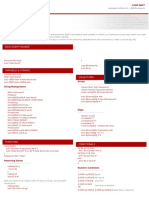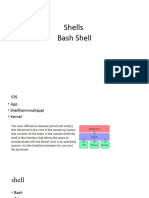0% found this document useful (0 votes)
19 views6 pagesIntroduction To Bash Scripting
The document provides a comprehensive guide on Bash scripting, covering topics such as creating and running scripts, using arguments, data types, operators, control statements, functions, and automation with cron jobs. It includes practical examples and commands for each topic, making it a useful resource for learning Bash scripting. The content is organized into distinct sections for easy navigation and understanding.
Uploaded by
Nguyễn Đức TâyCopyright
© © All Rights Reserved
We take content rights seriously. If you suspect this is your content, claim it here.
Available Formats
Download as DOCX, PDF, TXT or read online on Scribd
0% found this document useful (0 votes)
19 views6 pagesIntroduction To Bash Scripting
The document provides a comprehensive guide on Bash scripting, covering topics such as creating and running scripts, using arguments, data types, operators, control statements, functions, and automation with cron jobs. It includes practical examples and commands for each topic, making it a useful resource for learning Bash scripting. The content is organized into distinct sections for easy navigation and understanding.
Uploaded by
Nguyễn Đức TâyCopyright
© © All Rights Reserved
We take content rights seriously. If you suspect this is your content, claim it here.
Available Formats
Download as DOCX, PDF, TXT or read online on Scribd
/ 6





























































































